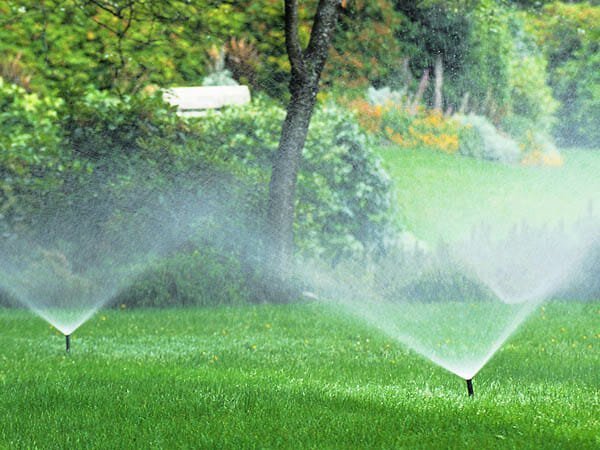
Grow Healthy Lawns with Less Nitrogen
GROW HEALTHY LAWNS WITH LESS NITROGEN
Dr. Leonard Perry, Horticulture Professor
University of Vermont
Most know nitrogen is important for growth and good quality lawns, even if just from watching television commercials. But if some nitrogen is good, more is not necessarily better.
 Nitrogen is one of the main fertilizer elements, the percent in a fertilizer represented by the first number in the analysis. So a 5-3-4 fertilizer would have 5 percent nitrogen. This element maintains dark green color, enhances shootdensity, and increases grass resistance to stress and pest injury.
Nitrogen is one of the main fertilizer elements, the percent in a fertilizer represented by the first number in the analysis. So a 5-3-4 fertilizer would have 5 percent nitrogen. This element maintains dark green color, enhances shootdensity, and increases grass resistance to stress and pest injury.
Too much nitrogen, however, can be detrimental to the turf grass. The grass may grow too lush, and so have increased disease problems. Too much nitrogen can reduce the lawn grass tolerance to high and low temperature stress. And too much nitrogen increases growth excessively, resulting in moisture stress and the potential for thatch (the dense layer of intermingled roots and shoots, both living and dead, near the soil surface that tends to block water and air).
Too much nitrogen also can be detrimental to the environment. Excess nitrogen can increase the risk of ground water pollution. More growth means more mowing. This means more time on the mower, more fuel used, and more air pollution from the mower.
Since nitrogen moves readily into the soil with water (“leaches”), it usually needs applying yearly in some form. There are some ways you can reduce the amount applied, or applied as fertilizers, and so reduce the risk of pollution.
— Be willing to have good quality turfgrass that is green, but perhaps not as dark green as the slick ads on television and in magazines. This is possible by using less nitrogen fertilizer– no more than one pound of actual nitrogen per 1000 square feet per application, and no more than two applications per year. So if using a fertilizer with 10 percent nitrogen, you should use 10 pounds to get this amount of nitrogen.
— Raise the mowing height to reduce turf stress and weeds. Many still mow too low. Low mowing often is justified only on highly maintained golf courses and similar situations.
— Use specialty turf fertilizers that have a high proportion of water insoluble nitrogen (WIN). When possible, use fertilizers with at least 50 percent WIN of total nitrogen. Natural organic sources are 100 percent slow release, which is desirable.
— Apply fertilizer at appropriate times of year. Avoid or reduce summer applications. The best once-a-year application is in late summer or early fall.
— Recycle grass clippings back into the lawns, such as with a mulching type mower. About 46 to 59 percent of the applied nitrogen from fertilizer ends up in the clippings. One estimate shows that returning grass clippings can contribute about two pounds of nitrogen per 1000 square feet a year. Returning grass clippings to the turf can reduce fertilizer needs by 25 to 40 percent.
— For some lawns, you may add or rely on a legume (such as white clover) among the grass to add nitrogen. Legumes have bacteria on their roots that take nitrogen from the atmosphere and convert it to nitrate forms that plants can use.
9/1/15
Distribution of this release is made possible by University of Vermont and New England Grows–a conference providing education for industry professionals and support for university outreach efforts in horticulture.
Receive your complimentary Relocation guide and magazine

